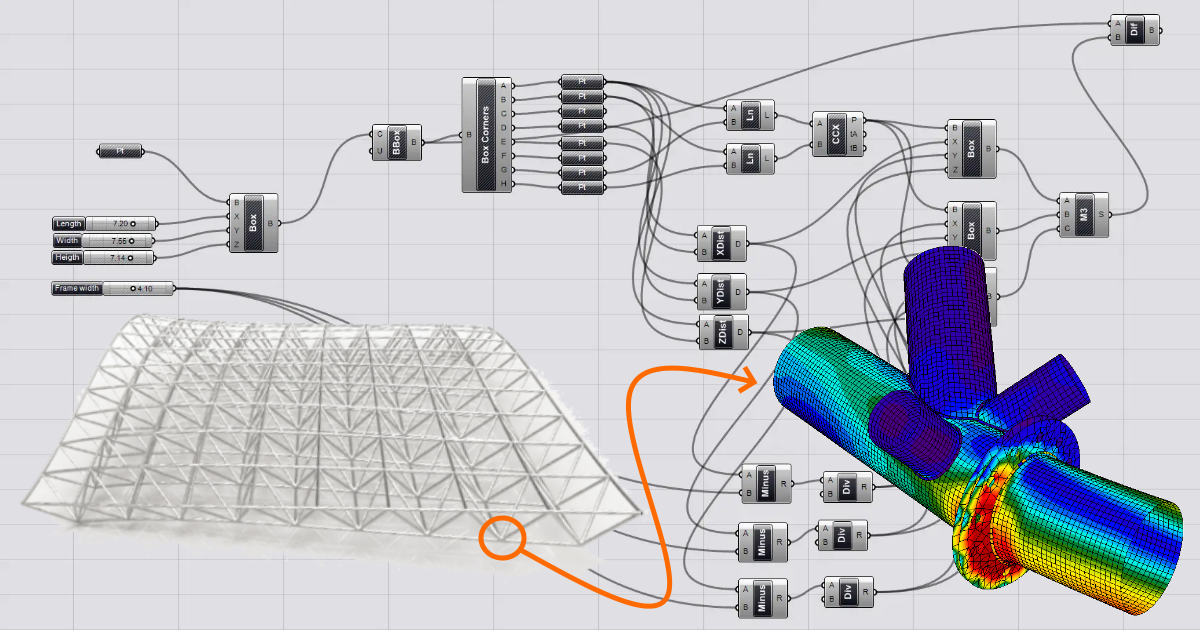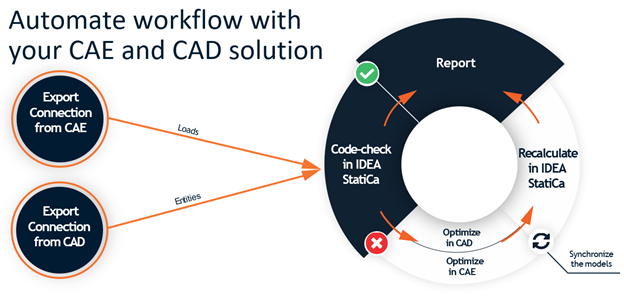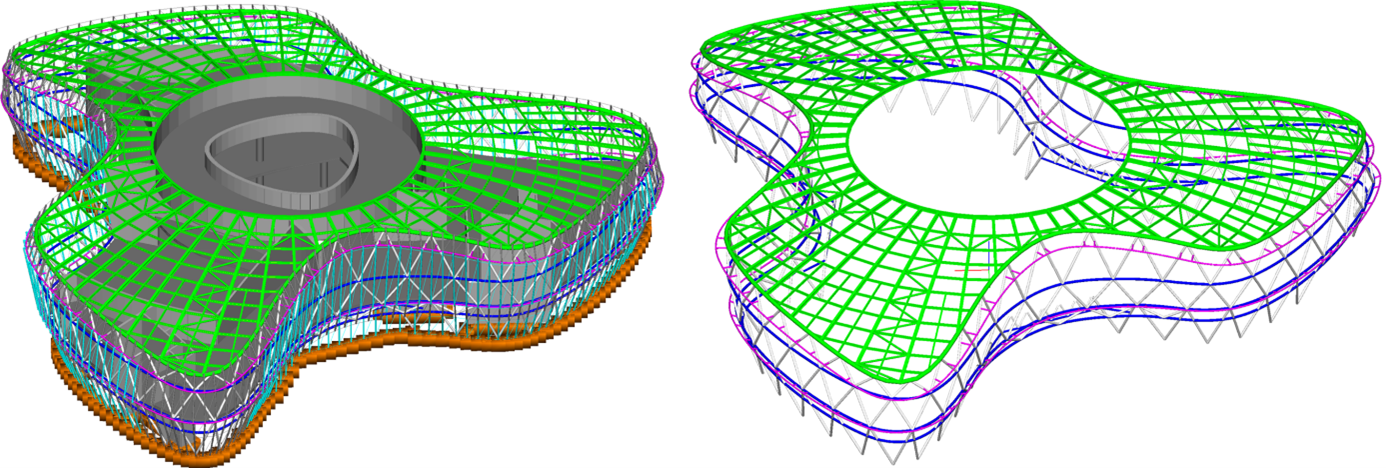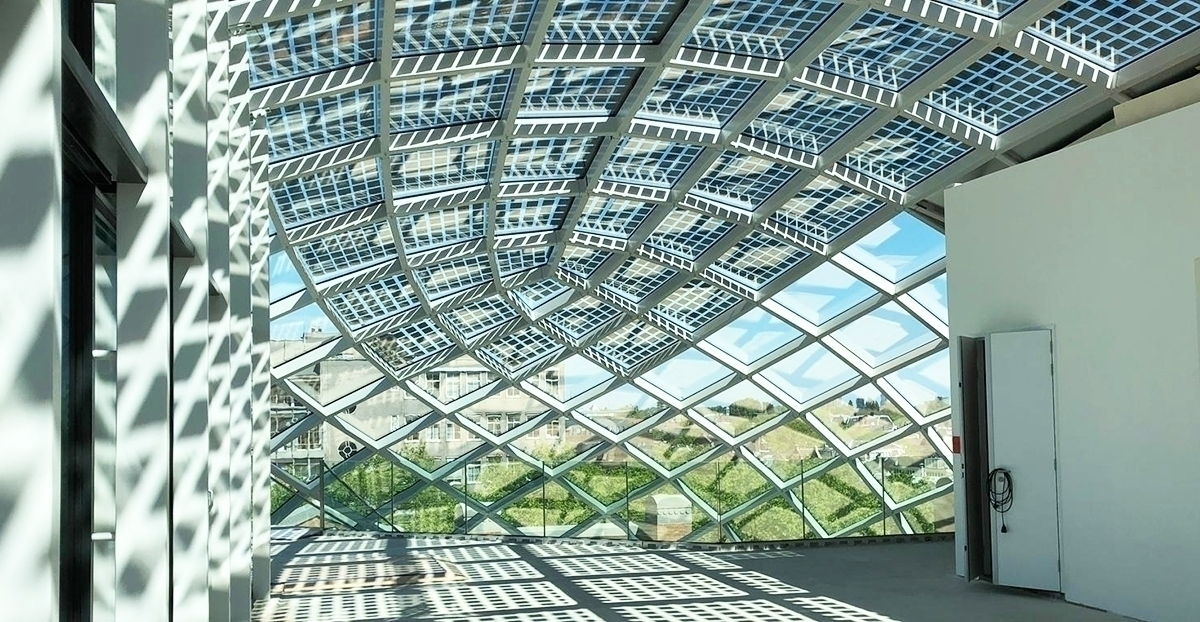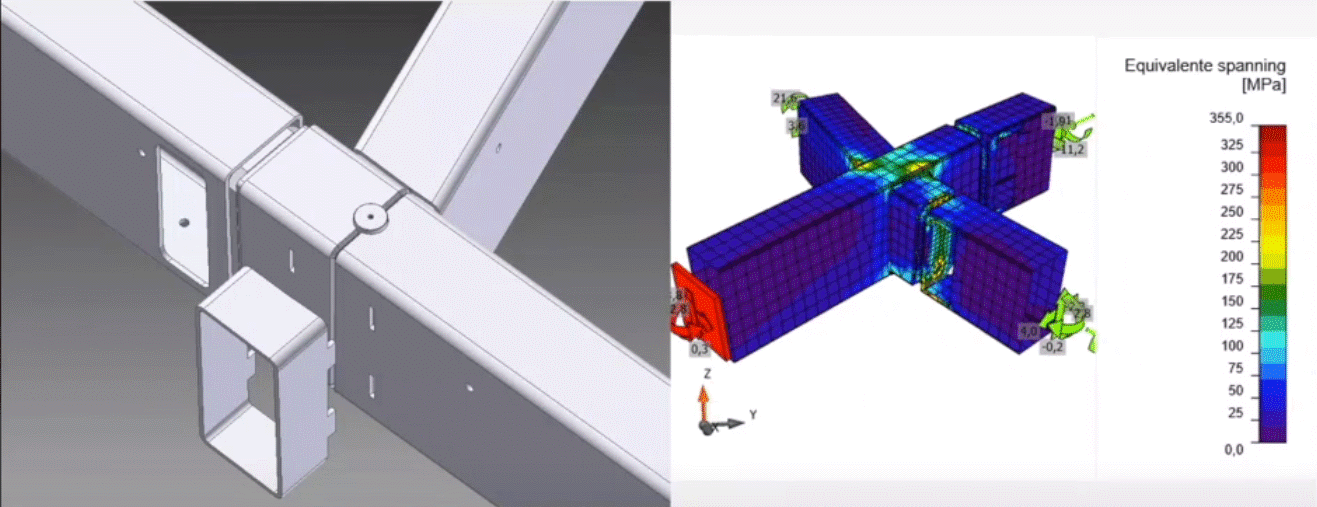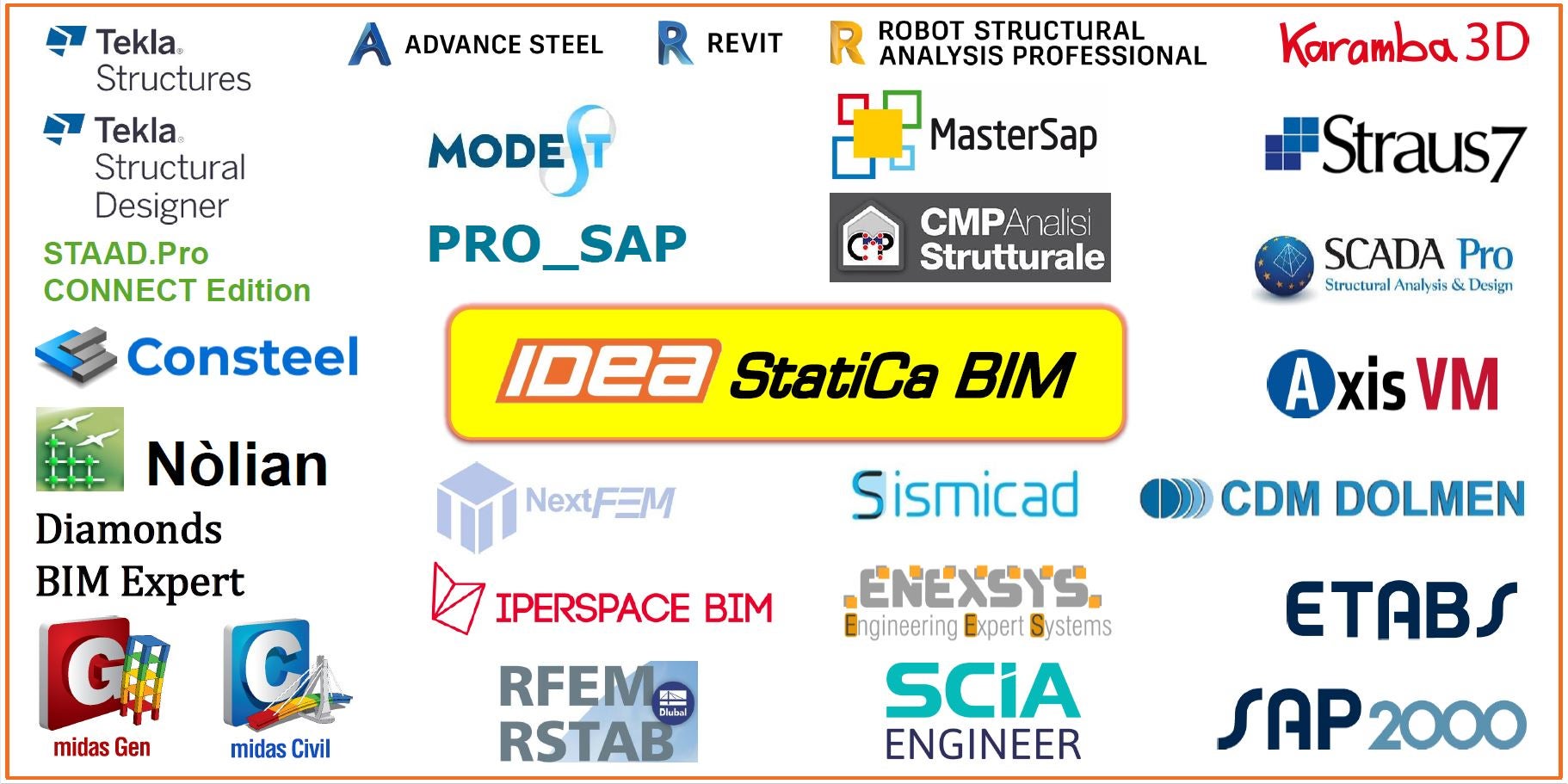IDEA Open Model – Feel the future
There are big players in the field of structural design and analysis applications operating worldwide. You already know that IDEA StatiCa is very far in enabling successful interconnectivity with these applications.
BIM links to the most widespread FEA and CAD programs are developed and maintained by IDEA StatiCa, and they are already included in the installation package. The key feature providing this interconnectivity is called the Code-check manager (CCM).
But still, there are plenty of smaller companies developing specialized applications and fine-tuning their solutions for specific industries or regions. If we were very thorough, we could find hundreds of such applications throughout all the territories.
It's not possible to develop and maintain the interconnections and working BIM-links with all of these applications mainly due to their continuous and fast progress in development and overall technical evolution. On the other side, all we need is to enable one set of data to communicate with another one seamlessly. It doesn't seem like rocket science at all.
We simply need to find a common language for all the stakeholders. That's why the IDEA Open Model (IOM) was brought to life and shared publicly. A BIM link can be created using this public API (application programming interface) for ANY (!) FEA and CAD applications.
IOM enables everybody to quickly build BIM links on their own. At first, the customer should initiate the discussion with developers of their application and point them to the IDEA StatiCa GitHub Page. Developers can find everything they need to develop such a BIM link in few weeks and also take advantage of support from the IDEA StatiCa team.
Looks great and simple, but what does the customer get for such effort?
Short answer - significant improvements to the workflow. No need to go through several processes over and over again and simplify them as much as possible. On every project, there are some creative tasks that most of the engineers want to do and some repetitive, boring tasks which nobody wants to do. So why not do just the interesting and important things and leave all the boring stuff to automated algorithms.
Imagine you just set all the important parameters for design and let the data automatically transfer between applications.
Advanced and specific utilization of our solutions can be used in the following scenarios:
- Running calculations on the bulk of connections/details to determine the most economical option,
- Background calculation using CBFEM method solver initiated on-demand in CAE/CAD solution,
- Using industry-specific codes (power plant constructions, research facilities etc.),
- Automation and optimization of standardized or repetitive designs,
- Structural design based on cost optimization,
- ...and many others
There is a huge psychological barrier when dealing with such automation. Why should you throw yourself into the "IT stuff" when current processes work fine? The answer is not surprising - it's a one-time investment (of your time, effort and money for IT guys) for which you get incredible time savings in repetitive processes (falling from several hours to few minutes) and gain a competitive advantage. Now it's a "nice to have" solution, but the time of "must-have" is coming soon anyway.
Examples of real-life projects
Organic structure shapes
One of the great examples of organic shape model automation is the HUNGEXPO arrival hall - the work of the Romanian team from the KÉSZ group. A whole steel webinar was dedicated to this progressive generation of the steel structure.
Design workflow with software links:
Rhinoceros/Grasshopper -> Pangolin plugin -> ConSteel -> IDEA StatiCa Connection -> Tekla Structures
The structural engineers used the advantages of automation for shape and structural optimization. They effectively invested their time end energy into preparation, and in return, they saved a lot of time in all the following phases.
Capital C - Glass roof topping
The roof part of multi-award-winning building in Amsterdam is another example of the progressive design approach.
The design office Octatube (Delft, Netherlands) used advanced computational tools to find and optimize and code-check the shape and elements of this unique glass-steel roof over a historical building in Amsterdam. IDEA StatiCa combined with RFEM enabled solving this technically challenging task.
Structure and Design
The structural system of the roof topping can be described as a cylindrical grid shell with two domes at both ends. Because of the adjacent building on the roof and the opening for the facade entrance, parts have been removed from the shape of the grid shell. In principle, the dome has only one repetitive structural joint, but the free shape causes each node to be different using unique parts. In total, about 1000 various steel components and 200 glass panels have been used.
Design workflow with software links:
Rhinoceros/Grasshopper -> Excel -> RFEM -> IDEA StatiCa Connection -> Autodesk Inventor
To provide such a large number of different joints with the required precision and meet all the manufacturing needs, the parameterization and algorithmization of the whole workflow were crucial. If you're interested in this project, some additional information can be found in our case study dedicated to this project.
What parameters do these projects have in common:
- architecturally interesting shape
- effort to optimize the structure and connections
- saving a lot of valuable time by avoiding repetitive tasks
- desire to do the job smartly
SMARTconnection research project
In our Webinar, Rayaan Ajouz from Bouwen met Staal and ABT presented how KarambaIDEA could be used to extend your workflow.
The new plug-in KarambaIDEA caught the extraordinary attention of the workshop audience. KarambaIDEA is a Grasshopper plug-in that enables the export of steel joints from the parametric steel structure modeled in Karamba3D to IDEA Statica Connection for further analysis on a detailed level.
Karamba3D, one of the software packages used in the workflow, is a parametric structural engineering tool that provides accurate analysis of spatial trusses, frames, and shells. Karamba3D is fully embedded in the parametric design environment of Grasshopper, a plugin for the 3D modeling tool Rhinoceros. This makes it easy to combine parameterized geometric models, finite element calculations and optimization algorithms like Galapagos.
You can also watch the presentation introducing KarambaIDEA examples:
This research project demonstrates extensive use of the new IDEA Open Model (IOM) API in order to build automated workflows. The universal interface is open to anybody who wishes to automate their workflow.
You can find more information about the KarambaIDEA plug-in here.
EISEKO - the Italian way
Our Italian partner company EISEKO is an expert not only in engineering software but also in the embedment of the IOM solution into third-party application workflows.
It's a story about the ability of a master using the knowledge of various types of engineering software as well as specific customers' needs. The experts from the EISEKO team immediately uncovered the immense power of the general connectivity between specialized third-party tools and IDEA StatiCa Connection.
GitHub
We have placed all information such as documentation and IOM-examples into repositories on GitHub for the community to use freely.
GitHub is a web service that supports software development using the Git versioning tool. GitHub offers free web hosting for open-source projects.
The forum can be used for resolving issues with the implementation of IDEA StatiCa IOM by third parties. You or your software specialists can find and use several prepared examples as a template for your own projects.
What data does IOM work with?
- Input: XML format – members, loads, plates, bolts, welds, …
- Output: brief results in XML, complete report in HTML
What is the price of the IOM solution?
Free – community support
Everybody in the world can use standard development tools to create IDEA StatiCa links to any CAE/CAD application similar to official IDEA StatiCa BIM links for free. Customers can visit GitHub to find more resources and benefit from the already existing community of developers. All of it is free of charge.
Project-based pricing
For many workflows, IDEA StatiCa can be used as an auxiliary function from a customer‘s platform and easily operate in the background. For such cases, it's possible to create tailor-made solutions for various company workflows based on either Desktop or Cloud. In case you are interested in such a service, don't hesitate to contact our IOM specialists.
Conclusion
It's quite clear that this approach to structural design isn't the best for every project or design company. But the fact that this is an unstoppable evolution in the standard workflow of tomorrow's structural engineers is even clearer. The architecture always wanted to be limitless in the matter of forms, and the structural engineers were often perceived as a barrier determining what is buildable and still reasonable.
Technology was always the engineer's tool to move these barriers forward.
The design and analysis applications are already here. Engineers throughout the fields use them for decades. But communication among the applications and flexible adjustments of the tools to the specific projects is where the bottleneck of the efficiency and workflow is placed right now.
Indeed, the structural engineer is not a software code writer. But these days, it's quite inevitable to know where to find a few of them. Sophisticated IT solutions interfere in all segments and production areas nowadays, and there is no reason why structural designers should stand aside. Several great outcomes can result from the successful cooperation of these two professions.
IDEA StatiCa is proud to be in the front line for these kinds of innovative research projects. If you have an idea of how workflows in your office could be improved, let us know.


